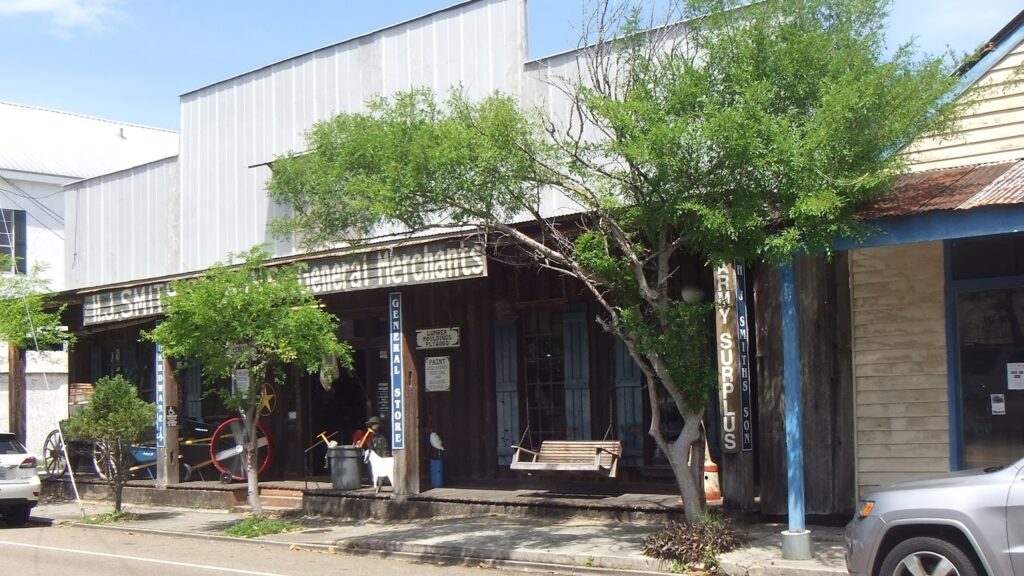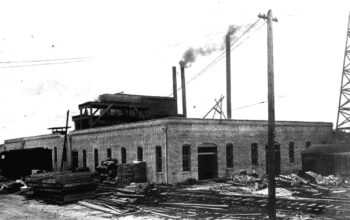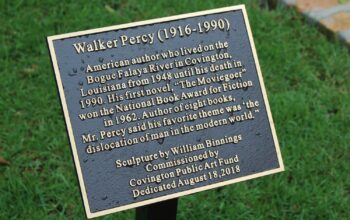Covington History segment provided by local historical writer Ron Barthet. This article has been broken up into 4 parts for ease of reading.
View Ron’s blog Tammany Family here.
According to the Historical Marker Project website, there are 45 historical markers in St. Tammany Parish. They share a variety of historical highlights across the area, giving us an idea of the people and places that contributed to early St. Tammany.
Here is their list. You can view the full list and individual markers here: www.historicalmarkerproject.com

Indian Village
In 1699 Bienville visited the Colapissa Indians who lived in this area. The Indians called the Pearl River “Taleatcha” (“rock river”) because of pearls found in shells from its waters. The French found the river water good to drink.
Greater Mandeville Veterans Memorial, a War Memorial
Dedicated To The Memory Of Those Who The Defense Of Our Country And All Who Served In The Cause Of Freedom
Bicentennial Covington #1
In 1907, Guido Alexius and his sons Alfred, Cintio and John, founded Alexius Brothers and Company; and later his son Horace joined in the business. In 1915, this landmark establishment, originally a gym, was purchased. Later in the 20th century, Guido’s grandsons G.C. and Haller Alexius operated the hardware store at this location until 1985. In addition, portions of the land were donated by the Alexius family for the construction of the Covington Trailhead.
The Old Railroad Depot
The original depot faced New Hampshire Street with a passenger and freight terminal facing east. During the mid-1900s, the depot was moved one block to the present site (now a restaurant). The St. Tammany Special line left New Orleans at 4:30 p.m. and arrived in Covington at 6:15 p.m. It would leave Covington at 6:45 a.m. and arrive in New Orleans at 8:30 a.m. daily. This train was composed of elegant coaches and contained parlor buffet cars.

Abbé Adrien E. Rouquette
English side- Abbé Rouquette (1813-1887), poet and priest, lived as missionary among Choctaw Indians in region of Bayou Lacombe from 1859 till his death. The Choctaw called him “Chata Ima,” meaning “Like a Choctaw.”
French side”Abbé Rouquette (1813-1887), poéte et prêtre, vécut comme un missionair entre les Indiens Choctaws de la région Bayou Lacombe de 1859 jusqua’à sa mort. Les Choctaws l’appelérent “Chata Ima” qui est “comme un Choctaw.”
Public “Ox Lot” Parking
Unique to Covington’s downtown business district and a credit to our forefathers, our original town grid layout allowed for public squares in the middle of each block for the purpose of trade and commerce. Farmers would bring their oxen-laden carts to town loaded with wares and conduct business in these designated center block locations. Traditionally called “ox lots” and largely responsible for Covington’s designation as a national historic district, today’s use provides free public off-street parking for downtown visitors and employees.
H.J. Smith and Sons Hardware and Museum

Founded July 4, 1876, H.J. Smith and Sons Hardware and Museum is the oldest hardware and general store in the parish, housing unique artifacts pertaining to the history of Covington. Of note are the dugout cypress canoe and lead coffin. It is a regular stop for school field trips. Cotton was brought in from north of town and Mississippi plantations to be shipped to New Orleans. As many as 40,000-50,000 bales went through Covington in a year. The wagons pulled by teams of oxen regularly lined Columbia Street from the cemetery to the landing.
St. Tammany Fishing Pier
The St. Tammany Fishing Pier was built from sections of the original I-10 Twin Span Bridges which opened December 21, 1965. Tens of thousands of cars used these bridges to cross Lake Pontchartrain between Slidell and New Orleans until the morning of August 29, 2005 when Hurricane Katrina made its final landfall. A storm surge in excess of 16 feet, combined with that water’s return to the Gulf of Mexico destroyed the twin bridges. This destruction became one of the storm’s most iconic images. St. Tammany Parish Government, partnering with LA DOTD and the LA Dept. of Wildlife Fisheries, chose to create a fishing pier as a new public use for the remnants of the bridges and as a testament to the strength and resiliency of the citizens who call southeastern Louisiana their home.
Reconstruction Period
During the Reconstruction Period, trade was still slow as the main source of land transportation was still the ox and the wagon. From the mid-1800s, the railroads were primarily used access the area’s vast timber reserves, but once built, they were quickly put to use by the burgeoning tourism and resort industry. On May 16, 1888, the East Louisiana Railroad reached Covington, heralding an economic boom. The flow of people and commerce that first came by river exploded with the arrival of the railroad.
Bicentennial Covington
Three rivers and several Indian trails converged in the area where Covington was founded. These major trade routes are what placed Covington at the center of commerce. They became the lifeline of trade and transport between points north of Lake Pontchartrain and the markets in New Orleans and beyond. When the bridges periodically washed out from logs floating down the river, the community would rally to restore these vital links.

Original Homestead of Walker Percy
Homestead owned by Walker Percy, who was an American author and philosopher. He is best known for his philosophical novels set in and around New Orleans, the first of which, The Moviegoer, won the U.S. National Book award for fiction. Walker Percy along with 21 other noted authors created the fellowship of Southern Writers.
St. Tammany Parish World War I Memorial, a War Memorial

Erected and Dedicated To The Soldiers Of World War I
1920; Restored 2010 By St. Tammany Parish Kevin Davis, Parish President.
Stay tuned for Part 2 of Historical Markers of St. Tammany!
Check out Ron Barthet’s blog Tammany Family for more great local history!




